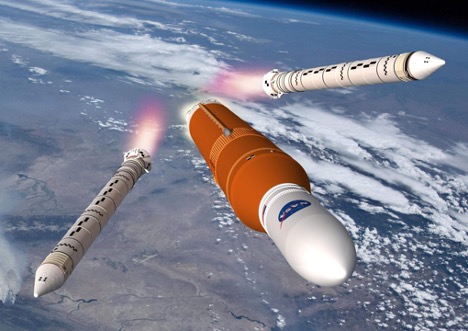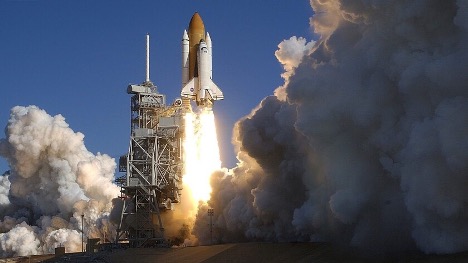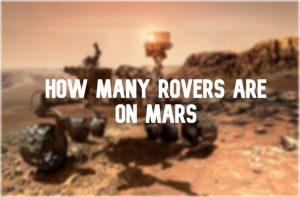A solid way to orbit: the use of a solid rocket booster in space industry
19th Sep 2022
In more than 60 years of spaceflight, science has yet to come up with a better way to get into space than a rocket. The main task of the rocket is to overcome the thickness of the Earth’s atmosphere and put the payload into low Earth orbit. And the more powerful its engines are, the more payload it can carry. In one of our articles, we already talked about the types of rocket boosters, and today we will pay special attention to one particular type — the solid rocket booster
Why is it called a solid rocket booster?
A solid rocket booster (SRB) is a small rocket that can be used both separately and as one of the stages of a larger rocket, most often the side booster or, first, less commonly, the upper stage. Solid means that such a booster runs on solid fuel. Small solid booster rocket can use gunpowder derivatives, while a mixture of ammonium perchlorate (oxidizer), aluminium (fuel) and polybutadiene (HTPB) as a binder is widely used in the space industry
How does a solid rocket booster work?

Loud and showily. If you’ve ever watched a Space Shuttle rocket launch, you’ll probably remember the flames escaping from the nozzles, the puffs of smoke enveloping the launch site, and the eerie roar that accompanies it all. This is how solid boosters work. Their task is to give the rocket an impulse at the start and help develop the necessary thrust, so they work for a very short time (2-3 minutes).
In view of such a simple, albeit very responsible mission, the design should be as simple as possible (in fact, it is only an engine and a fuel tank in one housing). The engine turns on and runs at full power until it burns all the fuel. It cannot be adjusted or re-ignited. This, however, is not a disadvantage, since there is no such purpose to begin with. After the engine has worked its full time, solid rocket booster separation occurs, and the spent stage falls to Earth, partially burning up in the atmosphere.
Are solid rocket boosters safe?
“They are very safe, very reliable, and they last a long time,” claims Scott Marston, Northrop Grumman’s Vice President of Strategic Programs. We can trust his words, even though this was not always the case. Solid fuels are highly flammable, and there were cases when a mistake made with a solid booster led to tragedy.
On 28th January 1986, the shuttle Challenger disaster shook the whole world. At 73 seconds into the flight, due to damage to the right solid rocket booster o ring, the fuel tank exploded during takeoff, which led to the destruction of the ship and the death of the crew.
In 2003, a VLS rocket exploded at the Alcantara launch site in Brazil while preparing for launch. The explosion reduced the 10-story launch pad to a heap of mangled metal and killed 21 technicians standing nearby. The cause of the accident was a sudden ignition of fuel in one of the solid fuel engines.
Both tragedies have become a telling lesson that solid rocket boosters do not forgive miscalculations. However, they were not abandoned. They are still used today due to their simplicity and relative cheapness of production. Let’s look at the most famous solid booster rockets.
Famous launch vehicles using solid rocket boosters
| Rocket name | Number of solid boosters | Burn time | Max thrust | Launches (success/ failure) | Status |
| Space Shuttle | 2 | 124 с | 13 000 kN | 133/2 | Retired |
| Titan IIIC | 2 | 115 c | 5 850 kN | 31/5 | Retired |
| Delta IV Medium | 2-4 | 91 c | 826.6 kN | 29/0 | Retired |
| Atlas V | 0-5 | 94 с | 1664 kN | 92/1 | In use |
| PSLV | 2-4-6 | 49 c | 719 kN | 45/3 | In use |
| Ariane V | 2 | 130 с | 7080 kN | 105/5 | In use |
| SLS | 2 | 124 с | 32 mN | Ready |
What is the most powerful solid rocket booster?
Until 2011, it used to be a space Shuttle booster. But after the closure of the Space Shuttle program, this championship was intercepted by Ariane 5 solid engines. At the same time, NASA was actively engaged in developing a new Space Launch System vehicle, which was supposed to implement the best tech from the shuttles and surpass them. Instead of 4-segment accelerators, SLS uses 5-segment solid propellant boosters with less toxic and cheaper propellant PBAN (polybutadiene acrylonitrile) instead of HTPB. In addition, they have 25% more fuel and improved avionics. Combined with liquid propulsion engines, SLS is the most powerful rocket in existence today and, according to NASA, the best option for returning humanity to the Moon.
On 29th August 2022, NASA was supposed to conduct the first SLS test launch but delayed it for 40 minutes before the announced time due to problems with one of the liquid engines. So, as we can clearly see, solid boosters are not the only tech that can cause problems.
SRB future: Elon Musk objects
As long as rockets fly on chemical fuels, solid engines will not be abandoned. They allow rockets to develop high thrust, which means they can carry heavy payloads. However, Elon Musk does not see the need for solid boosters — mainly because it’s difficult to recover and reuse them. Since these boosters cannot adjust thrust or be re-ignited, controlled landing also becomes impossible. And although the Shuttles’ experience proves that a solid booster can be restored, the undertaking was very expensive and not viable.
Still, solid rocket boosters will definitely persist for some time, and the upcoming NASA SLS launch proves this. Follow the updates together with Orbital Today!
FAQ about solid rocket booster
Why are solid rocket boosters used?
To increase rocket thrust and deploy heavy payload into orbit.
What is in a solid rocket booster?
The SRB combines the engine and fuel tank in one housing.
How are solid rocket boosters ignited?
It all starts with an electrical current running through an igniter wire. The electrical resistance of the igniter wire causes heat as the current passes through. That heat is enough energy to ignite the engine.
How are solid rocket boosters cooled?
Almost all SRBs are ablative cooled. The cooled structure is protected from contact with the atmosphere (or combustion products) by a layer of ablative material that absorbs the incoming heat. The ablative heat-protective shell is attached to the cooled load-bearing structure directly or through an intermediate thermal insulation layer.
Is solid or liquid rocket fuel better?
SRBs are more productive, easier to operate and manufacture, and cheaper than LRBs. But they, too, have several disadvantages. Learn more about the pros and cons of SRB and LRB.
How much does a solid rocket booster cost?
The cost of an SRB can be up to 10% of the entire rocket cost. For example, out of $49 billion spent on creating the first Shuttle, $2.5 billion (5%) was spent on rocket boosters (figures adjusted for inflation as of 2021).
Does SpaceX use solid rocket boosters?
No. Elon Musk is against using SRB. They are less suitable for reuse compared to liquid propellant rockets. They cannot be landed vertically like the Falcon 9 booster because these engines cannot be re-ignited, and their thrust cannot be controlled.






Thank you for your comment! It will be visible on the site after moderation.